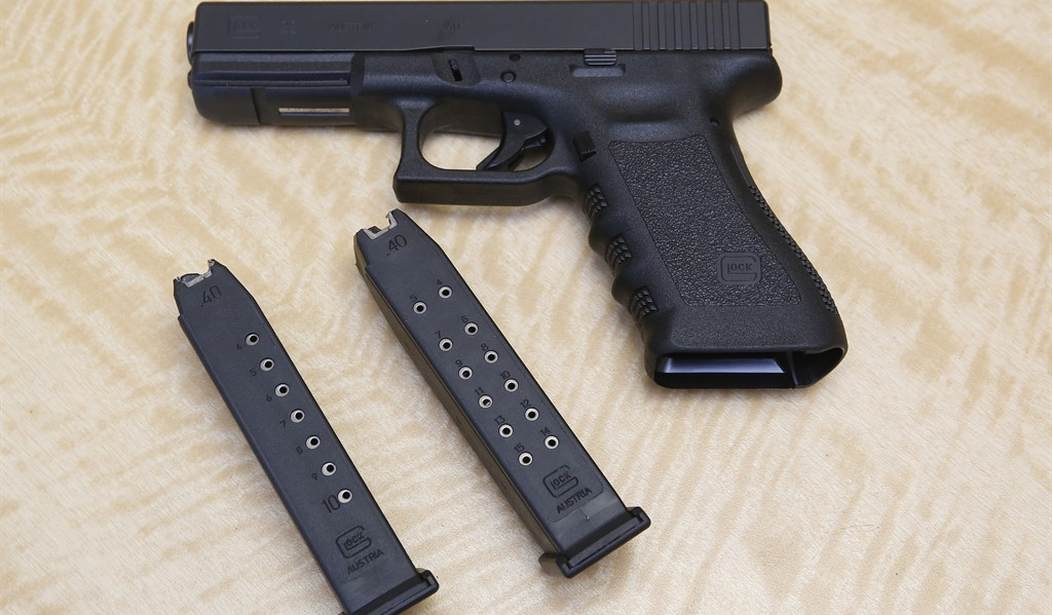We’re now on day three of the trial in Harney County, Oregon to determine the constitutionality of Measure 114, the narrowly-approved voter referendum that bans the sale, manufacture, and transfer of “large capacity” magazines and establishes a permit-to-purchase scheme that would impose a de facto 30-day waiting period on the purchase of any and all firearms. So far, things don’t appear to be going particularly well for the state’s attorneys defending the anti-gun measures, with Harney County Judge Robert Raschio shutting down their attempt on Tuesday to keep Oregon State Police Superintendent Casey Codding from discussing just how many rounds he and other officers are carrying to defend themselves and the communities they serve.
Oregon Special Assistant Attorney General Harry B. Wilson called the information irrelevant because the voter-approved gun control Measure 114 specifically excludes law enforcement from its restriction on the use of gun magazines that can hold more than 10 rounds.Law enforcement officers are invested with statutory authority and a responsibility to protect the public that civilian gun owners simply do not have, Wilson said.“This is not relevant to civilian defense,” Wilson argued. “It’s an apples to oranges comparison that is not relevant to the determination of the constitutionality of Measure 114.’’Attorney Tony L. Aiello Jr., who represents the two Harney County gun owners who filed the suit challenging the voter-approved measure, said Codding’s testimony is intended to counter the state’s argument that magazines with more than 10 rounds aren’t necessary for self defense.…Wilson interjected, “Then put a civilian on to talk about self-defense. This is a different situation.’’Aiello said civilians defend themselves with guns in situations that aren’t that different from what law enforcement faces.“Self-defense is self-defense,” he argued. “The statute doesn’t say that large capacity magazines are only useful in the hands of law enforcement. It doesn’t say that. And I think that Superintendent Coddings’ testimony will support that.”Raschio on Tuesday allowed the superintendent’s testimony, as well as subsequent testimony from the sheriffs of Union and Harney counties, but said he’d decide overnight based upon further study of the law whether or not the evidence is relevant for consideration in the case.
Union County Sheriff Cody Bowen and Harney County Sheriff Dan Jenkins then each testified that their deputies often have to rely on armed civilians because it takes time for their deputies to respond to calls in their largely rural communities. Bowen and Jenkins each testified about the threats of attacks from bears, wolves and coyotes in their communities.“I’ve never found myself in a situation where I wish I had less bullets,” Bowen said.
Earlier Tuesday, a lawyer for the state sought to discredit the testimony of Ashley Hlebinsky, a former curator at the Cody Firearms Museum in Wyoming called by the gun owners challenging Measure 114 to testify about the earliest guns made.After Hlebinsky spent more than an hour on the stand, Wilson, the state’s lawyer, delved on cross-examination into the awards Hlebinsky had received from the Second Amendment Foundation and into Hlebinsky’s husband’s ties to the firearms industry.Wilson even referenced the July opinion of Oregon’s U.S. District Judge Karin J. Immergut, who highlighted Hlebinsky’s professional and personal ties to the gun industry and lack of training as an historian when assessing her credibility after she had testified earlier this year in a separate challenge to the measure in federal court.Raschio made it clear that the federal judge’s ruling won’t influence him.“I don’t care, frankly, about other courts’ determinations on credibility, unless they found them in contempt or they perjured themselves,” Raschio said. “I’ll make my own credibility determinations, Mr. Wilson.”
“Daniel Defense manufactured the firearm used in the Uvalde mass shooting, correct?” Wilson asked. The gunman fired an AR-15 rifle, killing 19 schoolchildren and two teachers at Robb Elementary School in Uvalde, Texas.Aiello objected to the question, saying it was irrelevant.Wilson told the court he was attempting to show Hlebinsky’s alleged bias.The judge said he didn’t see how the use of the Uvalde gun impacted the witness’ credibility.“What you’re doing is inflammatory,” Raschio ruled, “and I’m going to sustain the objection.”









